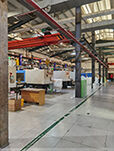When selecting plastic buckets for food storage or packaging, understanding standard capacities and material safety is critical. Whether you’re packaging honey, pickles, or bulk ingredients, the right container ensures product integrity, compliance, and cost efficiency. Here’s a breakdown of what food producers need to know.
Popular Capacities for Food-Grade Plastic Buckets
Food businesses often prioritize containers that balance practicality with storage needs. The most widely used sizes include:
-
1L–5L: Ideal for retail-ready products like sauces, condiments, or artisanal goods. A 5L bucket, for example, comfortably holds 4–5 kg of honey or fermented vegetables.
-
10L–15L: Perfect for mid-sized batches, such as bulk nuts, dairy cultures, or pre-mixed ingredients for bakeries.
-
20L–25L: Commonly used in commercial kitchens or food processing plants for oils, brines, or dry goods like flour and grains.
Tip: Stackable designs (e.g., tapered walls) can optimize warehouse space, especially for larger capacities.
Primary Materials in Food-Safe Plastic Buckets
Not all plastics are suitable for food contact. The most trusted options are:
-
High-Density Polyethylene (HDPE)
-
Why it’s preferred: Resistant to acids, oils, and temperatures from -40°C to 120°C.
-
Common uses: Dairy containers, vinegar storage, and bulk liquid transport.
-
Safety: FDA-compliant, BPA-free, and recyclable (#2 plastic).
-
Polypropylene (PP)
-
Advantages: Withstands hot-fill processes (up to 135°C), making it ideal for sterilized foods.
-
Applications: Ready-to-eat meals, hot-packaged soups, or microwave-safe packaging.
-
PET (Polyethylene Terephthalate)
-
Best for: Transparent containers where product visibility matters (e.g., dried fruits, candies).
-
Limitations: Less heat-resistant than HDPE or PP.
Beyond Size & Material: 3 Often-Overlooked Features
-
Seal Integrity
Look for buckets with silicone-gasket lids to prevent oxidation. For fermented foods like kimchi, airtight seals are non-negotiable.
-
UV Protection
Colored or opaque HDPE buckets (e.g., white, black) protect light-sensitive products like olive oil from degradation.
-
Customization Options
Embossed volume markers, pour spouts, or handles can streamline workflows. For instance, a 20L bucket with a built-in handle reduces spillage during transport.
Case Study: How a Nut Butter Brand Scaled Sustainably
A California-based almond butter company switched from glass jars to 10L HDPE buckets for bulk shipping. Results:
-
Costs dropped by 22% due to lighter weight and unbreakable design.
-
Shelf life extended by 3 months thanks to UV-blocking black containers.
-
Brand loyalty grew after adding eco-labels (“100% Recyclable”) and QR codes linking to recipes.
Final Tips for Food Producers
-
Verify certifications: Ensure buckets meet FDA (U.S.) or EFSA (EU) standards.
-
Test compatibility: Some acidic foods (e.g., tomato paste) may require PP over HDPE.
-
Plan for reuse: Design buckets for easy cleaning if they’ll be reused in-house.
By focusing on industry-trusted sizes, materials, and smart design features, food businesses can enhance safety, cut costs, and align with sustainability goals. Ready to explore options? JM Plastic Co.,Ltd offers free sample kits to test fit and functionality.

 Your message must be between 20-3,000 characters!
Your message must be between 20-3,000 characters! Please check your E-mail!
Please check your E-mail!  Your message must be between 20-3,000 characters!
Your message must be between 20-3,000 characters! Please check your E-mail!
Please check your E-mail! 

